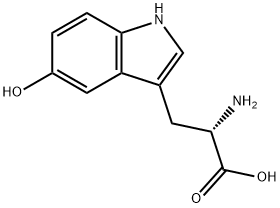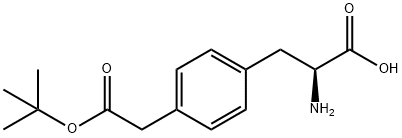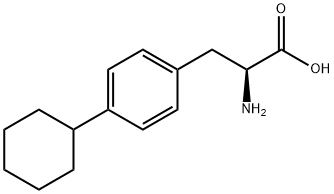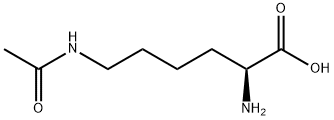Biocytin
Synonym(s):Bct;Nε-(+)-Biotinyl-L -lysine
- CAS NO.:576-19-2
- Empirical Formula: C16H28N4O4S
- Molecular Weight: 372.48
- MDL number: MFCD00077319
- SAFETY DATA SHEET (SDS)
- Update Date: 2025-12-22 14:18:24

What is Biocytin?
Description
Biocytin is a conjugate of biotin and lysine known formally as ε-N-(d-biotinyl)-L-lysine. The addition of lysine to biotin increases the chain length extending from biotin, allowing the synthesis of medium-chain reagents. It also provides terminal carboxyl and amino groups for derivatization or conjugation to proteins and other molecules. Covalent linking reactions typically involve carbodiimide or NHS-ester crosslinking chemistries. Biocytin is also used as an anterograde, retrograde, or intracellular neuroanatomical tracer that is fixable with aldehyde-based fixatives. For this and other applications, biocytin is detected with avidin or streptavidin probes.
Chemical properties
White Solid
The Uses of Biocytin
Useful for the synthesis of Biocytin containing peptides to study the mechanism of reactions catalyzed by biotin - containing enzymes
The Uses of Biocytin
Biocytin can be used as a versatile fluorescent marker for neuroanatomical investigations and for a biotinidase assay.
The Uses of Biocytin
Biocytin is used as a substrate to study the specificity and kinetics of biotinidase(s), to measure biotinidase deficiency and as a model compound to study various uptake mechanisms of cells and tissues. Biocytin has been used to label neurons, medium spiny neurons and optic nerves.
What are the applications of Application
Biocytin is a neuronal tracer also used for biotinidase assays
Definition
ChEBI: A monocarboxylic acid amide that results from the formal condensation of the carboxylic acid group of biotin with the N6-amino group of L-lysine.
Biological Activity
Versatile marker used in anterograde, retrograde and intracellular neuroanatomical investigations and in biotinidase assays. Displays high solubility in aqueous solutions and has a low molecular weight facilitating injection using micropipettes. Can be incorporated with a variety of avidin and streptavidin conjugates for detection by light, fluorescence or electron microscope.
Biochem/physiol Actions
Biocytin is an adduct of lysine and biotin. It is hydrolyzed by biotinidase, which acts on peptide-incorporated biotin or free biotin. Biocytin acts as a coenzyme.
Storage
-20°C
Purification Methods
Recrystallise biocytin rapidly from dilute MeOH or Me2CO. It can also be recrystallised from H2O by slow evaporation or by dissolving in the minimum volume of H2O and adding Me2CO until solid separates. It is freely soluble in H2O and AcOH but insoluble in Me2CO. [Wolf et al. J Am Chem Soc 74 2002 1952, 72 1048 1950.] It has been purified by chromatography on superfiltrol-Celite, Al2O3 and by countercurrent distribution and then recrystallised [IR: Peck et al. J Am Chem Soc 74 1991 1952]. The hydrochloride recrystallises from aqueous Me2CO/HCl and has m 227o (dec). [Beilstein 27 III/IV 7984.]
Properties of Biocytin
| Melting point: | ~245 °C (dec.) (lit.) |
| Boiling point: | 748.0±60.0 °C(Predicted) |
| alpha | D25 +53° (c = 1.05 in 0.1N NaOH) |
| Density | 1.234 |
| storage temp. | -20°C |
| solubility | Aqueous Base (Slightly), Water (Slightly, Sonicated) |
| form | Solid |
| pka | 2.53±0.24(Predicted) |
| color | White to Off-White |
| optical activity | [α]20/D +53°, c = 1.05% in 0.1 M NaOH(lit.) |
| Water Solubility | Soluble in water (50 mM) |
| Merck | 13,1227 |
| BRN | 97197 |
Safety information for Biocytin
Computed Descriptors for Biocytin
| InChIKey | BAQMYDQNMFBZNA-MNXVOIDGSA-N |
New Products
4,4-Difluoropiperidine hydrochloride tert-butyl 9-methoxy-3-azaspiro[5.5]undecane-3-carboxylate Indole Methyl Resin N-Isopropylurea N,N-Dicyclohexylcarbodiimide(DCC) MELDRUMS ACID 5-METHYLISOXAZOLE-4-CARBOXYLIC ACID Magnessium Bis glycinate Zinc ascorbate 1-bromo-2-butyne 2-acetamidophenol 9(10H)-anthracenone Erythrosin B, 4-Piperidinopiperidine 2-((4-morpholinophenylamino) (methylthio) methylene) malononitrile 2,4-dihydroxybenzaldehyde 3-(4-morpholinophenylamino)-5-amino-1H-pyrazole-4-carbonitrile Methyl 2-methylquinoline-6-carboxylate 2,6-dichloro-4-nitropyridine 4-Bromo-2-chlorobenzonitrile 2-(benzylamino)acetic acid hydrochloride 4-(tert-Butoxycarbonylamino)but- 2-ynoic acid 3,4-dihydro-2H-benzo[b][1,4]dioxepine 1-Phenyl-1-cycloprppanecarboxylicacidRelated products of tetrahydrofuran








You may like
-
 Biocytin 95% CAS 576-19-2View Details
Biocytin 95% CAS 576-19-2View Details
576-19-2 -
 Biocytin CAS 576-19-2View Details
Biocytin CAS 576-19-2View Details
576-19-2 -
 3-(4-amino-1-oxoisoindolin-2-yl)-1-methylpiperidine-2,6-dione 98%View Details
3-(4-amino-1-oxoisoindolin-2-yl)-1-methylpiperidine-2,6-dione 98%View Details -
 614-19-7 98%View Details
614-19-7 98%View Details
614-19-7 -
 20677-73-0 (2,2-diethoxyethyl)methylamine 98%View Details
20677-73-0 (2,2-diethoxyethyl)methylamine 98%View Details
20677-73-0 -
 3-(4-(hydroxyamino)-1-oxoisoindolin-2-yl)piperidine-2,6-dione 98%View Details
3-(4-(hydroxyamino)-1-oxoisoindolin-2-yl)piperidine-2,6-dione 98%View Details -
 57381-49-4 2-bromo-4-chlorobenzonitrile 98%View Details
57381-49-4 2-bromo-4-chlorobenzonitrile 98%View Details
57381-49-4 -
 4,6-dichloropyrimidine-5-carbaldehyde 98%View Details
4,6-dichloropyrimidine-5-carbaldehyde 98%View Details
5305-40-8
